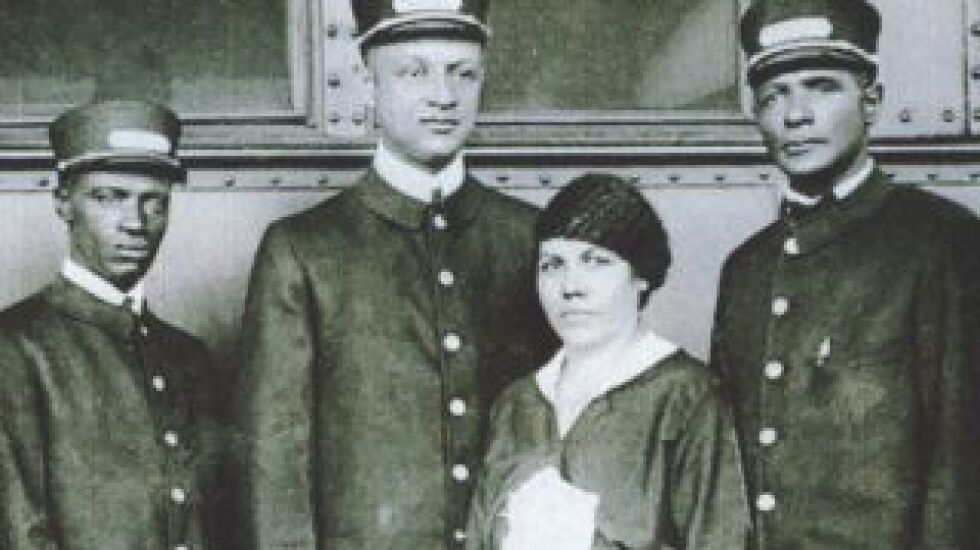
My grandfather was a Pullman Porter beginning in the late 1930s. He spoke fondly of his time and considered A. Phillip Randolph, the civil rights activist and organizer of the Brotherhood of Sleeping Car Porters, a hero.
A proud African American union member, his porter employment situated the Moores into the middle class. Granddaddy never told me — nor did I ask — about Black women who worked on Pullman cars. I assumed they didn’t exist.
Turns out they did.
I learned from a new free exhibit that Black women worked on those luxurious trains as maids. The public can catch a glimpse of their stories from the Newberry Library in Chicago, which rightfully puts these women and their stories in plain sight. “Handmaidens for Travelers: The Pullman Company Maids” displays records from Newberry’s collection.
Long overshadowed by the porter men, the maids were smaller in number. Often they were the only Black female employee within a Pullman car. Women like Mae Josephine Cole. Nannie Bell Crevin. Rosa Lillebelle Davis. These are three of the maids whose pictures are blown up for public view upon entering the exhibit. The photos come from their Pullman Company employee cards.
Like porter jobs, maid car jobs created stable employment and provided the opportunity to travel throughout the United States — rare opportunities for African Americans. And like the porters, maids relied on tips to supplement their wages by providing white passengers with manicures or hair styling. One picture on display is a Black woman in uniform sitting across the table from a white woman as she holds her nails. Another photo shows a maid flanked by two children and a baby, as it appears she’s reading the newspaper to them.
Maid uniforms consisted of a black one-piece dress with a white collar and a bibbed apron with strings long enough to tie in a neat bow. Lace frill, black shoes and stockings topped off the attire.
Maids were subject to the whims of white passengers who beckoned them, or accused them of theft if an item went missing during the train trip. To apply for a maid position, women navigated an intrusive process that investigated the cleanliness of their home environment. In 1927, maids had to undergo a medical examination to allay concerns about infectious diseases such as tuberculosis.
Miriam Thaggert, author of “Riding Jane Crow: African American Women on the American Railroad,” curated the exhibit and pulled documents never seen before by the public. An employment application asked questions such as “is applicant temperate in habits,” “does applicant play games of chance, or gamble in any way whatever” and if applicant was crippled, deformed or in debt. A four-page pamphlet listed 17 rules for maids. Rules included instructing maids to be subordinate to conductors. The use of rouge or powder was prohibited.
There’s no question that Pullman jobs offered security for Black workers. George Pullman’s commitment to hiring African Americans came after the Civil War. Pullman train cars — known for ornate and opulent accommodations — rode right into the era of Jim Crow. The Pullman Company billed the women as “handmaidens for travelers.” The choice of words is striking. Black maids and porters worked in servitude for wealthy white patrons. A side of indignity came along with paychecks.
The Newberry exhibit is the start of what I hope is more attention on the overlooked maids. Gazing at their photos, I wonder if they felt hope traveling North to revel in the spoils promised by the Great Migration. Were they disappointed? Did they arrive on the trains and feel the pangs of second-class citizenry? How did they maintain dignity in the face of accusations?
We don’t get all of the answers from this exhibit but we can keep asking the questions to take the maids out of the shadows.
“Handmaidens for Travelers: The Pullman Company Maids” runs through Sept. 16 at Newberry Library.
Natalie Moore is a reporter with WBEZ.
The Sun-Times welcomes letters to the editor and op-eds. See our guidelines.







